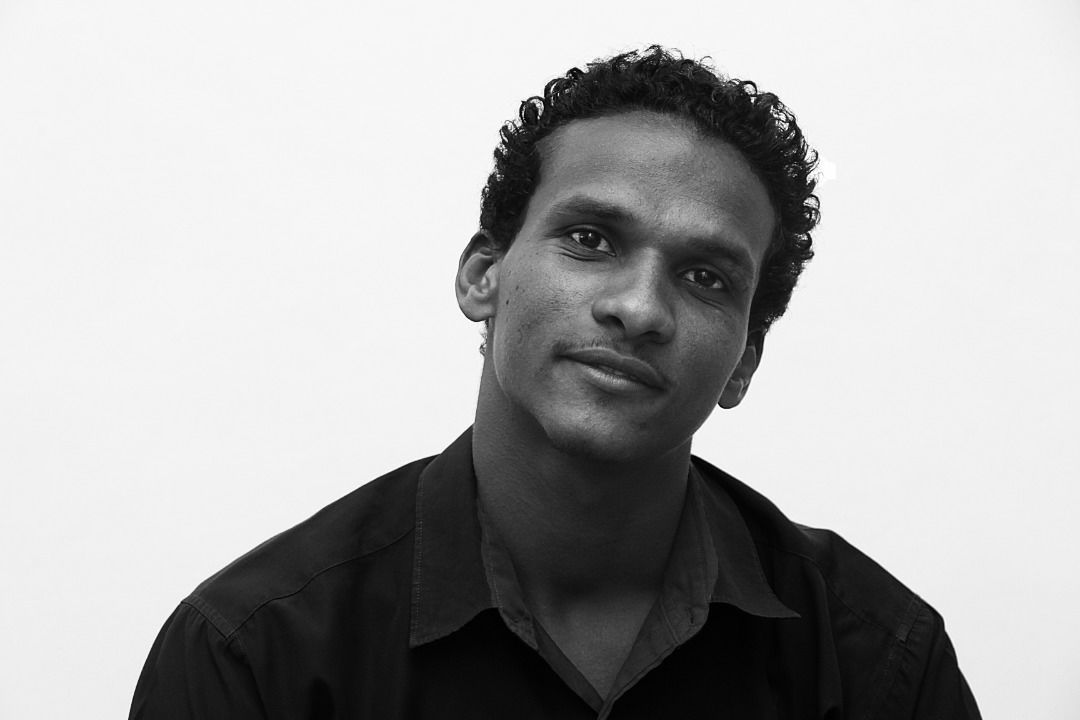Do old buildings have a higher tangible value than their moral value or do the aesthetic interest in the city's architecture disappear when it comes to materialism, religion, and politics? The development of the city and the prosperity of its societies, in addition to their culture and traditions with regard to construction, is parallel to the artistic and sensory vision of art and beauty that humans develop throughout their life. The interest in how one senses their surroundings may limit them to perceive them with their material value only.
Here in Sudan, the question remains: how did the community deal with the remaining monuments of colonial influence so that they remain an important component of today’s modern urban life?
Over time, there has been an interest in ancient buildings and the architecture of the Turkish and British colonial period as historical monuments that influenced the history of Sudan and increased similarity between the cities of Khartoum, Atbara, Port Sudan, and Madani. Now, in the city of El Obeid, the remaining monuments and architectural masterpieces exhibit an ancient spirit for contemplation and cultural and historical exploration. Despite the differences in seasons and temperatures in these cities, the architectural resemblance is visible in the construction of buildings to suit the nature of the place, relying on both iron and wooden ceilings, wooden doors, indoors and outdoors windows, and the use of red bricks and cement alongside local rocks in construction.
As a city, El Obeid was created by convoy trips in the past and it became a commercial center and a land- port between the north, east, central, and West Africa, where it brought in different cultures and ethnicity. It also extended railway lines across the country, built by the English colony. Despite the urban development and population expansion of the city, the rest of it remained standing as the last knights in its battle with time, unmoved by the city's extensions, to remain as ruins about to flourish with great old tales and victories.
Railway Station
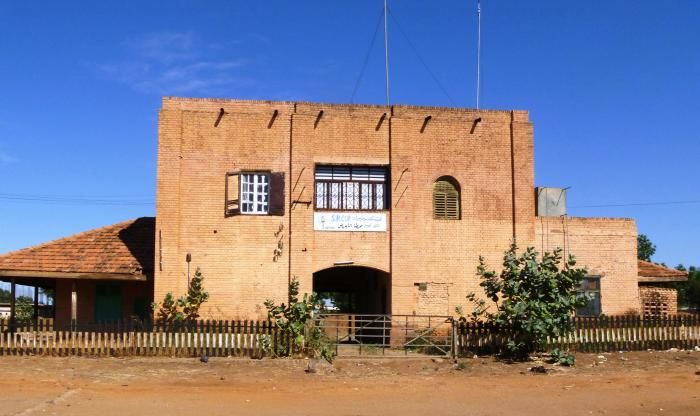
Source: wikimedia.org
In 1911, a railway was constructed- which at that time was considered a sign of urban progressiveness and sophistication for the cities. The main station building consisted of one floor of red bricks with a wooden ceiling and decorated with red tiles, a characteristic of ancient Islamic culture and Andalusian architecture. This design inspired administrative offices and residential neighborhoods, but what remains of them now is in the British Quarter and the Directorate district in El Obeid city. What we see now is an uneven distribution of administrative offices and residential homes for different communities from a different time.

Photo Credit: Khaled Omer
The Directorate Buildings and the British District
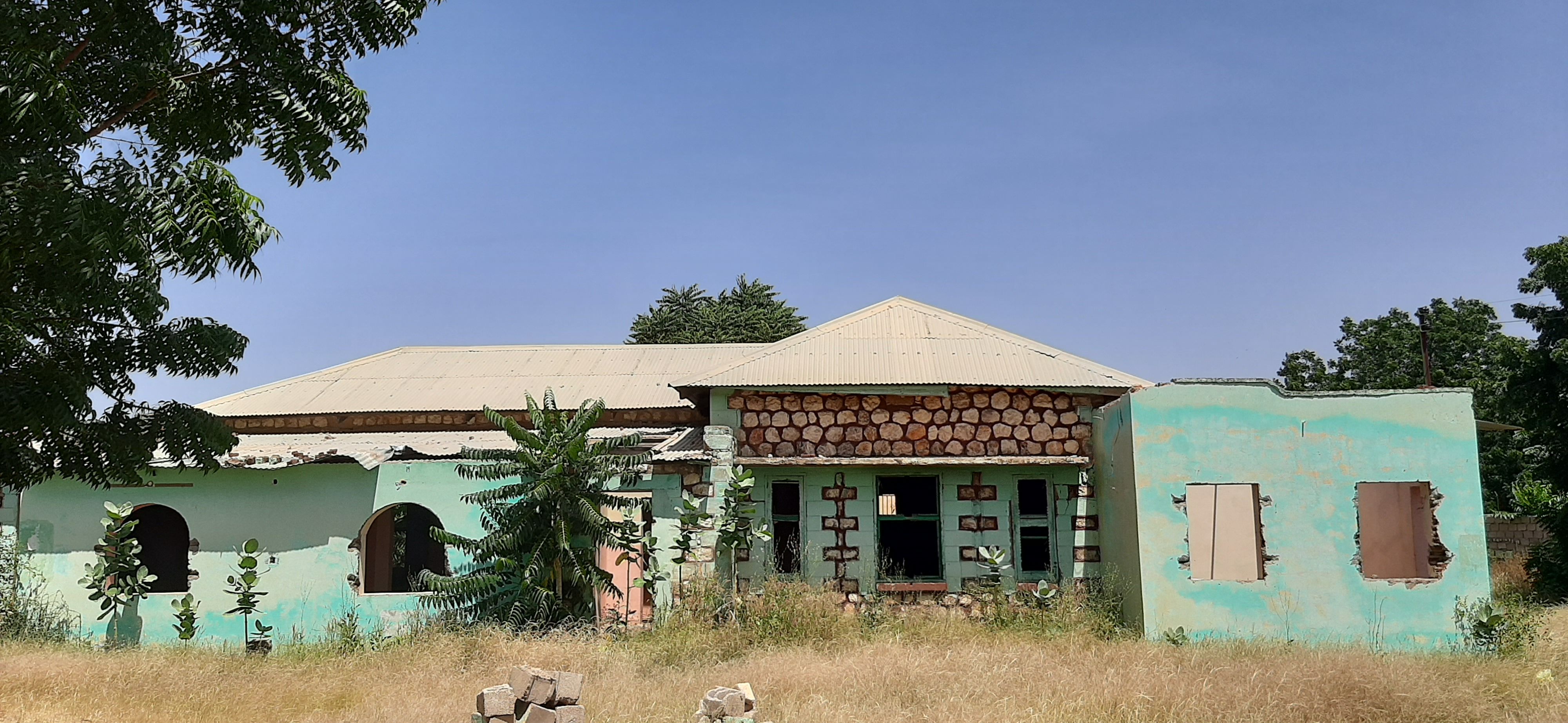
Photo Credit: Khaled Omer
After independence, governments took advantage of old buildings for their own interests, inappropriately transforming and obliterating their old features. They were transformed into concrete walls and painted in different colors, as was the case for the building in the Directorate district or Ministries Street, which represents the State Ministry of Finance. Despite all this, there are were enough concerns so that some of the buildings in the Directorate district have been renovated by the Antiquities Authority in collaboration with UNESCO as a World Heritage Site.
The building appears from the outside in the form of a castle, with a spacious courtyard in the middle in the form of a garden, held by thick walls, with gates showcasing the art of English architecture. The top of the building is decorated with wooden walls revolving around the entire building, showcasing the protection and control system of the palace.
In the British district, the shape of the buildings and the history of their construction were the most vulnerable to the change of features. They were built with stone, and cement was used for ceilings instead of wood and iron, in addition to the distinctive shape of the short exterior walls, which are surmounted by different geometric shapes.
Modern English Architecture
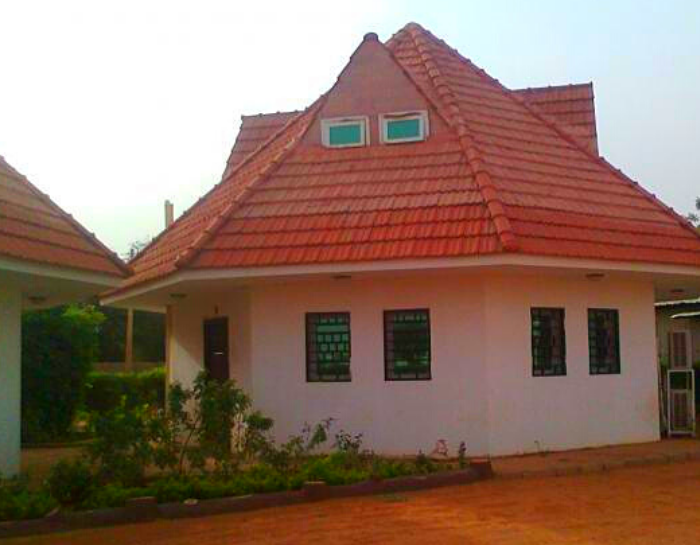
Source: Wikimedia.com
The period of colonization was followed by the emergence of Sudan's administrative renaissance architecture. It is represented by small villas with green spaces and circular and square gardens. You can still find this style in the old clubs and hotels in the British district, with long buildings with windows and open balconies such as the Zanobia hotel.
The Catholic Cathedral, our lady Queen of Africa
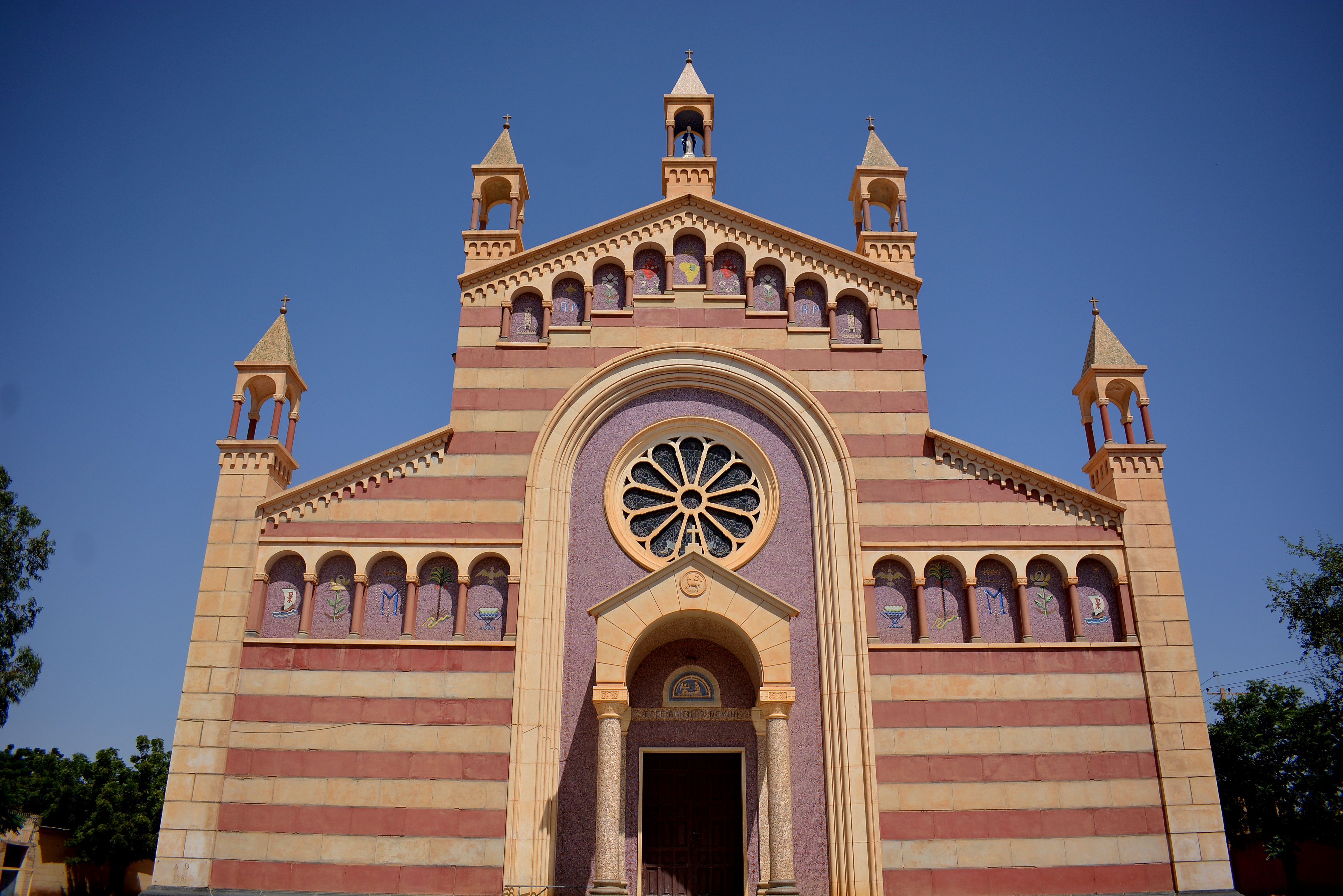
Photo Credit: Sam Photography
Spirituality and intellectualism in different religions have multiple dimensions influencing the lives of individuals and groups, visually appearing in places of worship such as temples, churches, and mosques. The centrality of spiritual and intellectual life in Christianity is reflected in churches and monasteries. For the Cathedral in El Obeid, the architecture is one of the most prestigious in Sudan. Andariya visited Bishop Jonah Tombi, who said “El Obeid Cathedral is one of the most beautiful churches in Africa and the Middle East, founded by Daniel Camboni in 1881, and built-in its present form by an Italian monk between (1961 and 1964). The monk helped the Sudanese workers in its construction, and all the building materials were brought from Italy.”
Bishop Jonah Tombi added "there is no drawing or symbol within the cathedral without meaning and significance, the engraved languages mean not to ignore and distinguish the plurality of languages and cultures in the Christian religion. Which shows the majesty and God's ability to embrace all tongues, and many languages are engraved on the perimeter of the ceiling of the Church to indicate God's understanding of all the prayers of his servants, whatever the language and origin. It’s easy to understand the verses in the form of drawings and symbols, used as a simple explanatory language to suit the general public understanding”.
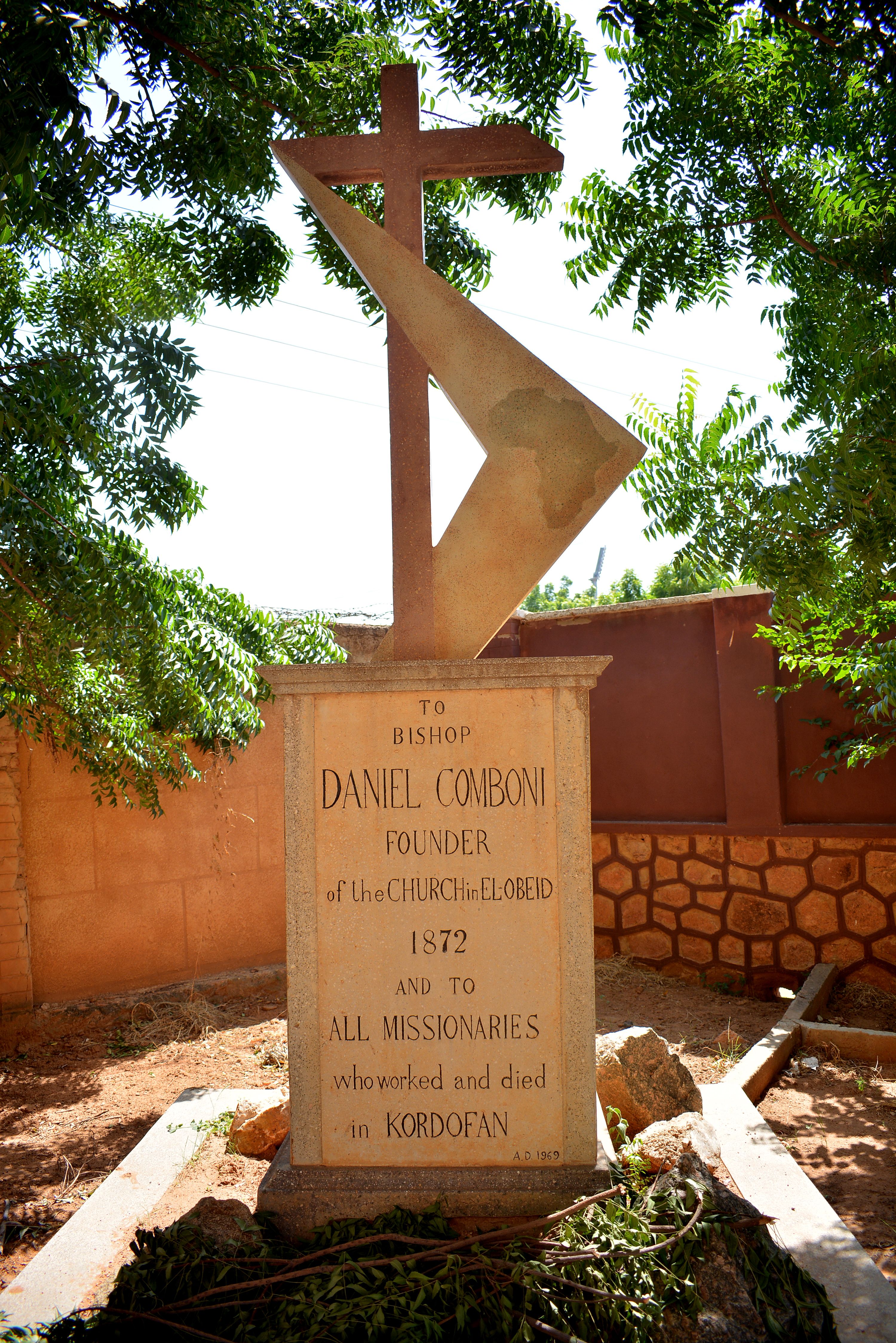
Photo Credit: Sam Photography
The beauty of the Cathedral can be observed from its exterior architecture in its bright, dark red colors, consistent with that of the door-based columns, as well as its medium-sized towers and arches around its windows from the outside and inside, as an extension of the amazing Greek and Italian architecture. Cathedrals, in particular, contain complex structural forms. They tend to display a higher level of contemporary architectural style and work with a large number of artisans to accomplish it, and the Cathedral occupied an important social, cultural and historical place in the civilization of the region.
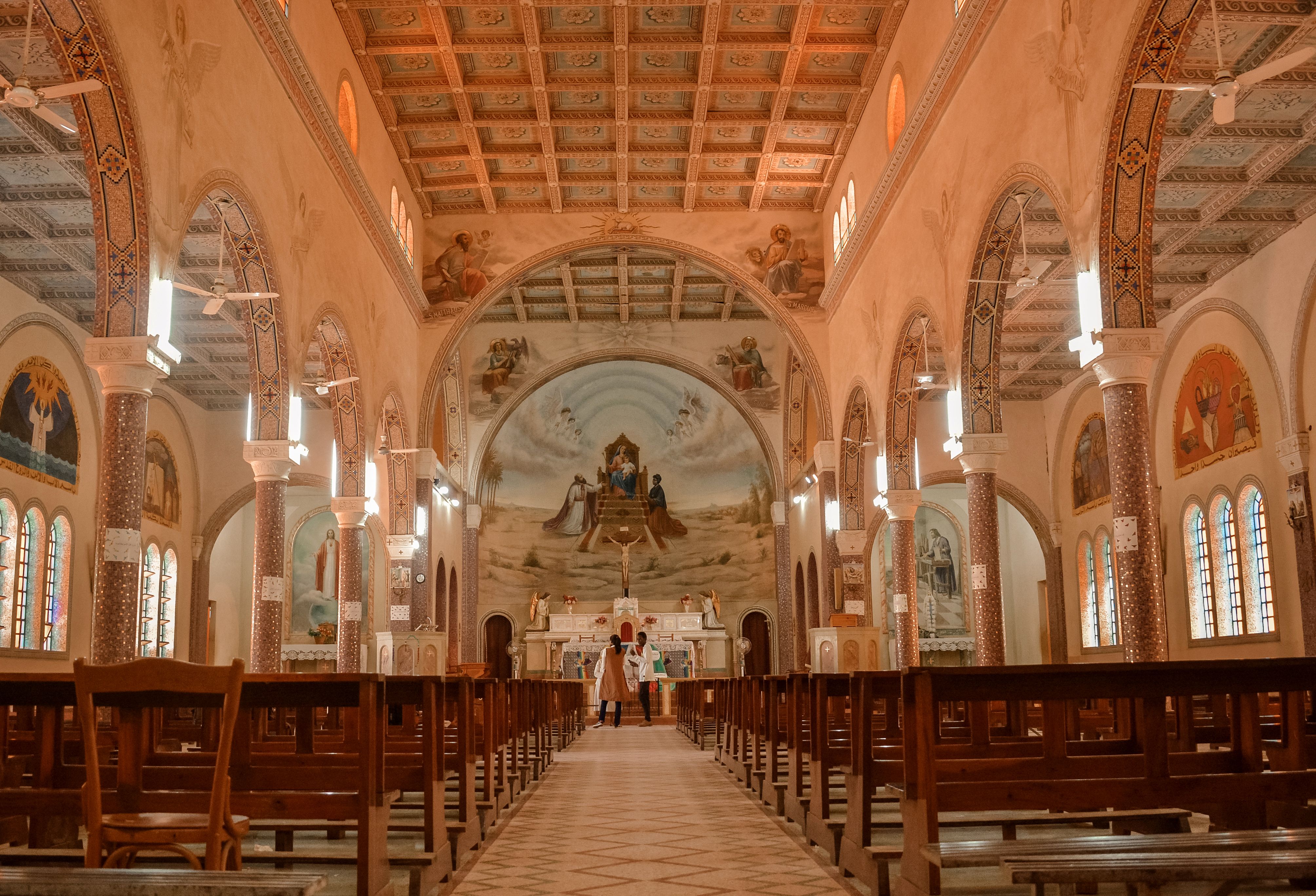
Photo Credit: Sam Photography
The aesthetic details that adorn the Cathedral, such as the high walls of the church and the natural components of the surrounding environment, are a comprehensive way to understand the culture of the region and the plurality of the ethnic and geographical components. The symbolism is clear to the meanings of spiritual worship and balanced to approach God without discrimination. The illustrations add a beautiful touch, nodding to the culture and geography of Sudan, including drawings of palm trees inspiring the beauty of the north of the country, and huts and mountains indicating its south.
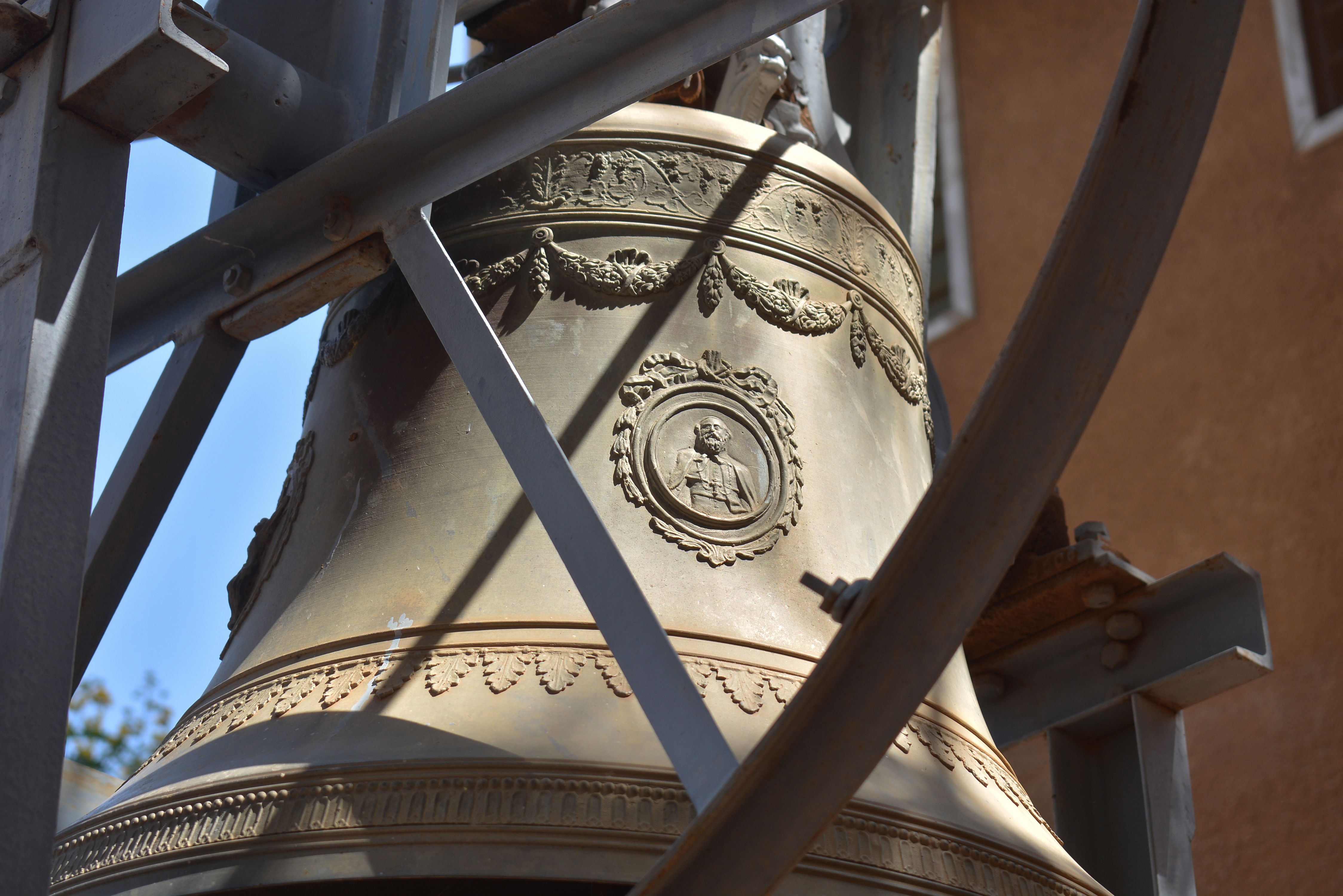
Photo Credit: Sam Photography
The Cathedral of the Queen of Africa in El Obeid city rings its bells for prayers every Sunday as it calls for the beauty of ecclesiastical architecture; with a mosaic glass on the windows and walls and its arches above the multiple doors with different names, verses, and beloved prayers with the Greek-style drawings of life. We saw the painting of Saint Bakhita, the Virgin Mary, and Jesus the son of Mary, and with them, the visitor feels the beauty and the spiritual details of the Cathedral's unique architectural exhibition.
El Obeid as a city has been a gathering place of many cultures for a long time. Its architecture demonstrates the use of local materials to build huts and old wooden walls, simply expressing common forms found in the villages of Sudan. These buildings clearly differed from the buildings erected during the English rule between 1899-1956. What this article described is simply an attempt to reconstruct the local cultural and artistic understanding of the region in an unusual way; linking local architecture and culture between the old historical buildings of the other, to the present culture of the city and its community.
